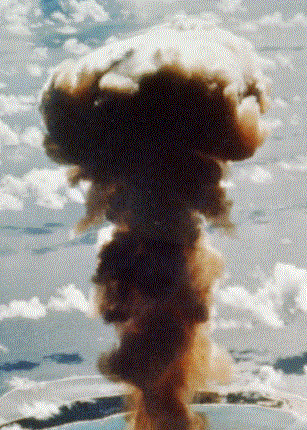Indian New Deal, Tribal Termination, and Urban Relocation 1934-1967
1946
Atomic bomb testing begins on Bikini Atoll in Marshall Islands

The U.S. drops several atomic bombs on the Marshall Islands, devastating the environment and endangering the Indigenous people there, exposing them to extremely high levels of radiation as far as 200 miles downwind. In 1946, the U.S. government asks Micronesian inhabitants of the atolls to “temporarily” relocate, so the United States government can begin testing atomic bombs for “the good of mankind and to end all world wars.” In 1947, the U.S. government creates a trust of the atolls through the United Nations. The trust promises that the government will protect the islands against loss of land and resources. The residents are relocated to nearby islands that cannot adequately sustain the population, and starvation ensues. Meanwhile, nuclear testing commences. The fallout of the testing spreads across the inhabited islands of Rongelap, Rongerik, and Utrik Atolls. Inhabitants of Rongelap and Rongerik Atolls do not receive evacuation until after two days of radiation exposure and already show symptoms of acute radiation syndrome. (https://www.ctbto.org/specials/testing-times/1-july-1946-test-able-bikini-atoll/)